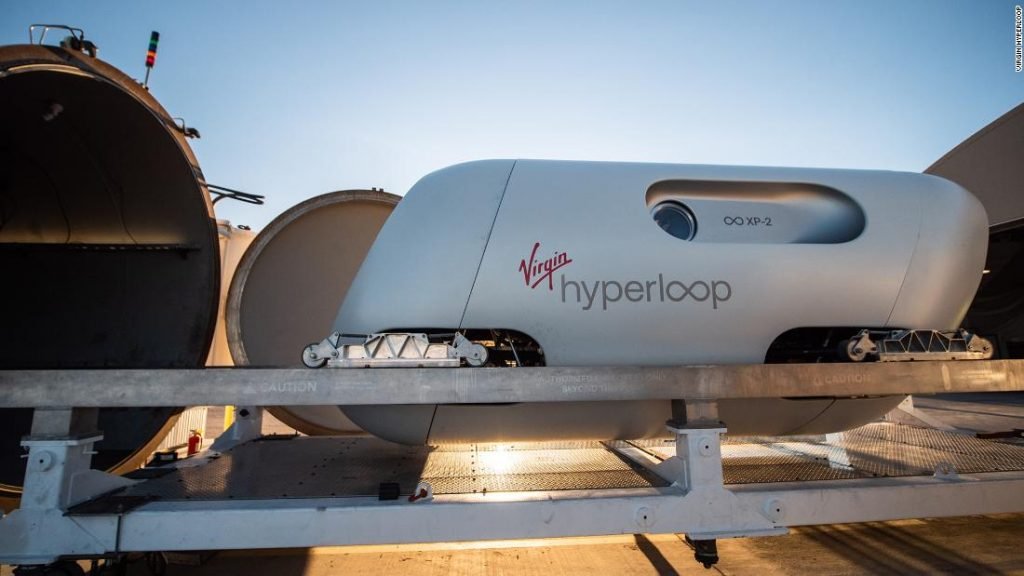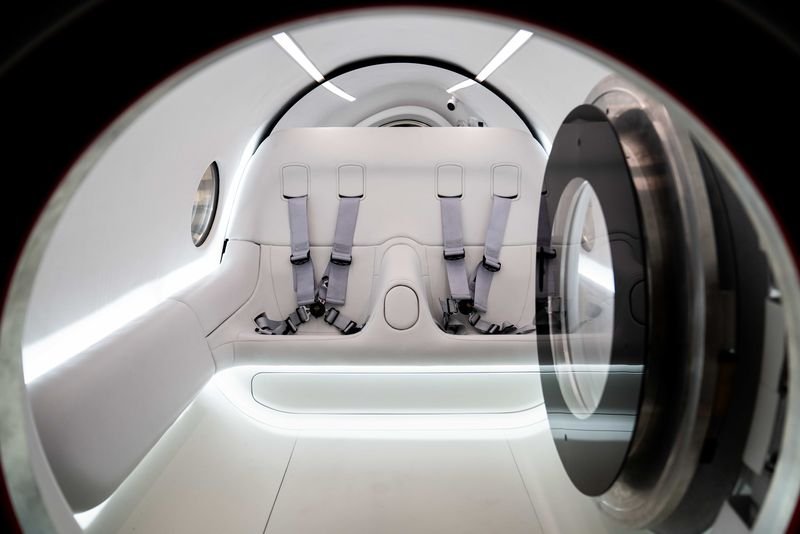Virgin Hyperloop confirmed that it was performing a prototype of its ultra-fast human passenger transport system for the first time.
The test took place on Sunday afternoon at the DevLoop test track in the desert outside Las Vegas, Nevada. Virgin Hyperloop’s Chief Technical Officer and co-founder, Josh Giegel, and Sara Luchian, Head of Passenger Experience, were the first two passengers. After strapping into the company’s sparkling white and red hyperloop capsule, called Pegasus, they were relocated to the airlock as the air inside the sealed vacuum tube was extracted. The pod then accelerated to a speed of 100 miles per hour (160 km / h) down the length of the track before slowing down to a stop.
It is an important achievement for Virgin Hyperloop, which was created in 2014 on the premise of making the vision of Tesla and SpaceX CEO Elon Musk of a futuristic transport system of magnetic levitating pods moving through almost airless tubes at speeds of up to 760 mph (1,223 km / h) a reality.
The DevLoop test track is 500 meters in length and 3.3 meters in diameter. The track is located about 30 minutes from Las Vegas, in the kind of desert that hyperloop pods could cross in minutes one day. The company says it has carried out more than 400 tests on this route, but never before with human passengers — until today.
“Nobody’s done anything close to what we’re talking about right now,” Jay Walder, CEO of Virgin Hyperloop, told The Verge. “This is a full-scale, functioning hyperloop that is not only going to operate in a vacuum environment but is going to have a human in it. No one’s been close to doing it.
The Pegasus pod used for the first passenger test, also known as XP-2, was developed with the aid of the renowned Danish architect Bjarke Ingels. It is a scaled-down version of what Virgin Hyperloop hopes will ultimately be a full-size pod capable of carrying up to 23 passengers. It weighs 2.5 tonnes and measures 15-18 feet in length, according to Giegel. Within, the lush white interior is intended to be familiar to travelers who may not be instinctively comfortable with the idea of slingshot through a vacuum-sealed tunnel at the speed of a commercial flight.
“This isn’t like some mad, new-found science fiction discovery,” Luchian said in an interview a few days before the exam. “This is something that reminds me of the place I’ve been and used many times, that I’d feel good putting grandma in and taking her on a visit somewhere.”
Before the simulation, Luchian said she was eager to witness the acceleration and to monitor the temperature inside the pod and the ventilation system. Giegel said that he wanted to see the safety protocols of the device in action and would keep track of whether they could maintain contact with operators during the test. “If it’s not safe enough for me, it’s not safe enough for anyone,” he said.
Giegel said that the acceleration is going to feel close to a plane taking off. The pod is powered by magnetic levitation — the same technology used for bullet trains. The maximum speed of the first commercial bullet train, the Shanghai Maglev, is around 300 mph.

To be sure, the pod did not exceed a theoretical top speed of 760 mph for the hyperloop. Virgin Hyperloop proposes that, with enough track, could potentially reach 670 mph — but the company’s record to date is 240 mph, which it reached in 2017.
“It’s going to be a little short,” said Giegel before the exam. “We’re going to get up to about 100 miles an hour, a little above, and we’re going to speed up, slow down, and it’s going to be easy. We’re not astronauts, we’re all there — we’re sitting there.



